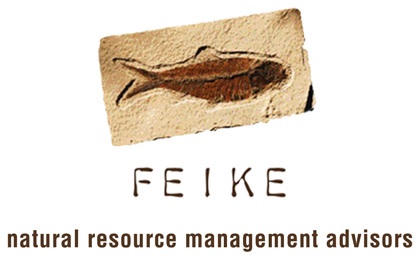The North Gauteng High Court on 24 November 2014 handed down one of the most important judgements in recent times concerning the determination of catch allowances. The application was brought by, inter alia, the Border Deep Sea Angling Association against the Fisheries Department (DAFF) and its Minister.
The Association sought to review and set aside a 23 November 2012 decision by the Minister to ban all harvesting of red steenbras by recreational fishers. The Association contended that the decision was, inter alia, irrational, taken arbitrarily and capriciously and one that no reasonable person in the position of a minister would take.
The court agreed with the Association, reviewed and set aside the red steenbras ban in so far as it concerns recreational fishers and awarded costs against DAFF and the Minister.
The full judgement is available from Feike on request. The judgement however provides a crucial precedent and standard for the determination of what constitutes rational and therefore lawful decision-making when determining catch limits and has dire implications for the way DAFF has been summarily and heavy-handedly deciding catch allowances in fisheries such as lobster (particularly the recreational sector) and abalone.
For too long, DAFF has been operating on the basis that it will simply do as it pleases and ram through annual catch allowance allocations with little to no consultation and on the basis of appallingly outdated and irrelevant research data. For example, in the Deep Sea Angling Association matter, DAFF tried to convince the court that its reliance on 13 year-old research data was rational and justifiable. The court rejected this contention as being nonsensical and irrational.
DAFF also tried to convince the court that catch per unit effort (CPUE) data showed that the red steenbras stock was overfished. Once again, the court rejected this contention, correctly noting that CPUE data is irrelevant to determining stock status as it does not prove how much fish is in the sea. In other words, CPUE data is not a substitute for actual research into stock status. This ruling is particularly important for the abalone fishery where DAFF continues to rely substantially on CPUE data to reduce TAC limits (especially in Zones E, F and G) because DAFF has never undertaken actual research or its research is embarrassingly outdated.
The court also emphasised the need to take into consideration the economic impacts of such decisions. DAFF currently does not in any way consider the socio-economic impacts of its TAC decisions which are taken under veils of secrecy, poor or dated science and irrelevant documents which are substantially aimed at being verbose and to obfuscate fair and transparent decision-making. The manner in which DAFF is presently mismanaging the determination of the abalone TAC for the 2014/2015 season is a case in point and the Deep Sea Angling Association ruling opens the Minister and his department to a review application on similar grounds.
DAFF further contended that it was not necessary to actually determine whether it was commercial fishing or recreational fishing that resulted in the overfishing of red steenbras stocks. The court rejected this argument as being clearly nonsensical and irrational. The court rightly asked how is it possible to design a solution for a problem if you are unable to understand its causes! This is of course the definition of insanity.
Once again, DAFF's repeated decisions to punish the legal abalone fishery when it is the illegal fishery that is decimating stocks will - on the precedent of this judgement - be held to be unlawful. In fact, the evidence is worse for DAFF in the abalone fishery where it has accepted that the legal fishery takes about 120,000 (95 tons) abalone annually while the illegal fishery harvests nothing less than 7,500,000 million abalone (+ 2500 tons). It is inconceivable that any rational and reasonable decision-maker would ever curtail the legal fishery while allowing the illegal fishery a free hand to poach.
The same will apply to the lobster TAC. Who is responsible for the ongoing decimation of stocks? Recreational fishers? Interim relief fishers? The commercial fishery? The fact that DAFF has not undertaken research to determine this and simply then proceeds to punish entire sectors arbitrarily and without any basis for the decision will mean that sector-wide reductions of the lobster TAC will, in all probability, be declared to be capricious, arbitrary and therefore unlawful.
Finally, what this decision exposes as well is the state of poor management that our fisheries department finds itself in. How is it that the most recent scientific research on a critical stock such as steenbras, which is part of a section 16-managed fishery - a fishery in environmental crisis!! - dates back to 1999? How relevant and sound is the research pertaining to our other fisheries that DAFF is purportedly "managing"?
Why is DAFF not undertaking socio-economic research? Given that DAFF is not even able to allocate fishing rights any more, what exactly are they doing? What are we actually paying this government department to do, then?

No comments:
Post a Comment